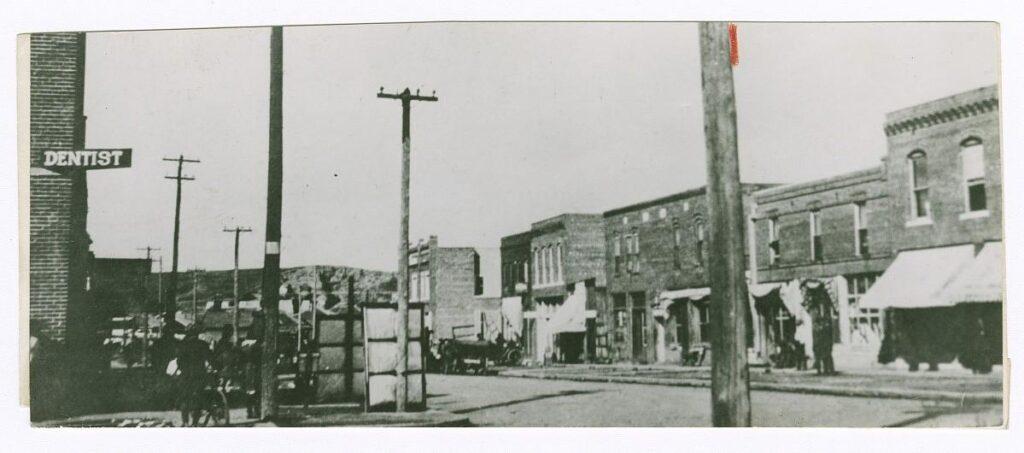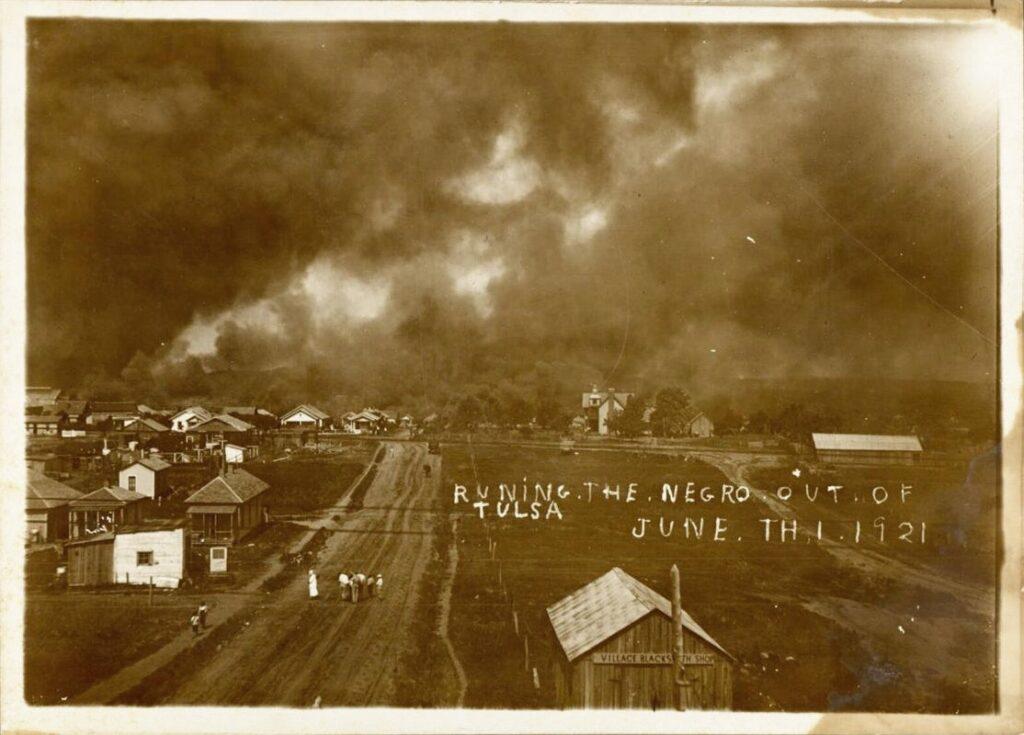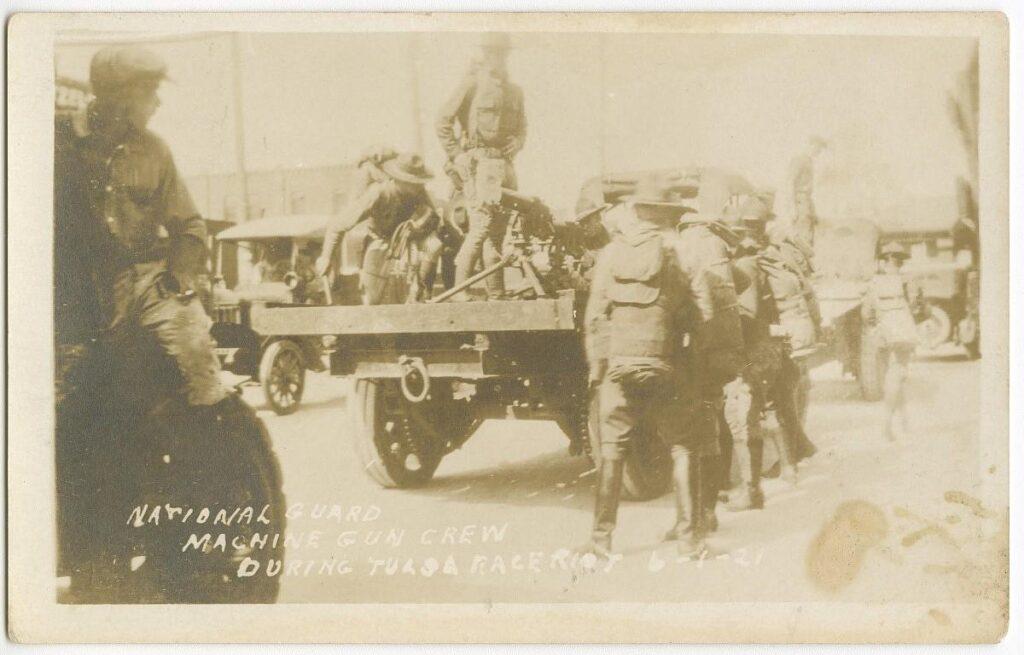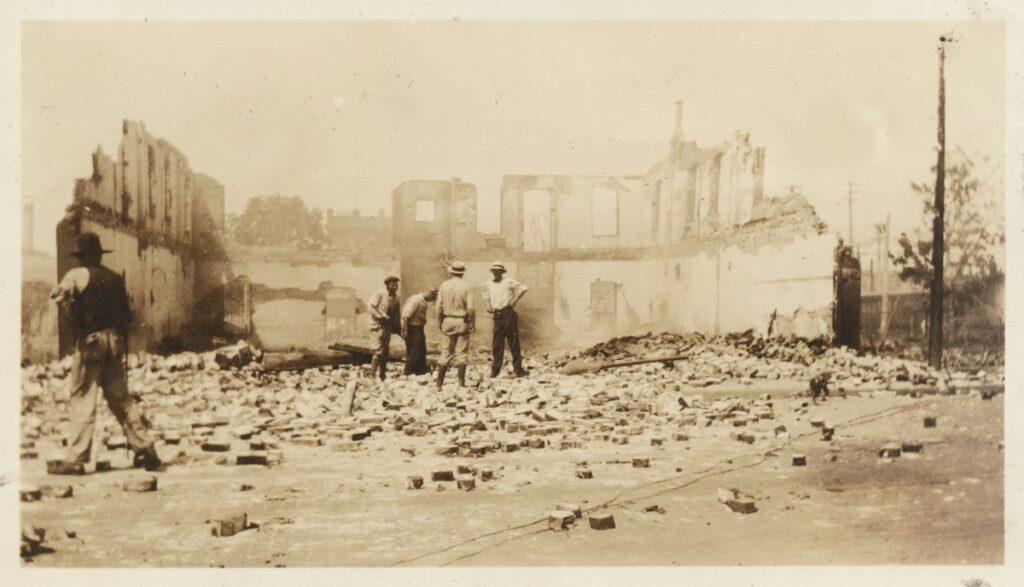Legacy of Justice: Tulsa Race Massacre Survivors and The Quest for Reparations
Unveiling the indomitable spirit of Tulsa Race Massacre survivors, their pursuit of reparations, and the ripple effects on America’s racial justice journey.
By Darius Spearman (africanelements)
About the author: Darius Spearman is a professor of Black Studies at San Diego City College, where he has been pursuing his love of teaching since 2007. He is the author of several books, including Between The Color Lines: A History of African Americans on the California Frontier Through 1890. You can visit Darius online at africanelements org_.
Key Takeaways
| Topic | Details |
|---|---|
| Greenwood Community | Known as the “Black Wall Street,” Greenwood was a prosperous African American community in Tulsa, Oklahoma. |
| Prelude to the Riot | A series of events, including the arrest of a Black man and the failure of law enforcement, led to the riot. |
| Ideological Factors | Conflicting ideologies and white supremacy played a significant role in the riot. |
| Survivors | Hughes Van Ellis, Viola Ford Fletcher, and Lessie Benningfield Randle |
| Lawsuit | Reparations lawsuit filed under Oklahoma’s public nuisance law |
| Legal Progress | Oklahoma Supreme Court to consider the reparations case |
| Remains Identification | Archeological efforts to identify the remains of victims |
| National Recognition | Renewed interest in the Tulsa Race Massacre, especially during the centennial in 2021 |
The shadows of the past loom large over the present, nowhere more so than in Tulsa, Oklahoma. The Tulsa Race Massacre of 1921 remains an indelible part of America’s history, embodying the racial tensions of the era. The Greenwood District, known as “Black Wall Street,” was a flourishing hub of African American businesses and culture, which was decimated during the massacre, leaving scars that linger a century later.
As the nation grapples with racial reconciliation, the stories of the survivors and their quest for justice echo through the corridors of time, serving as both a reminder and a beacon of hope. The pursuit of reparations and recognition sheds light on the broader narrative of racial injustice in America, emphasizing the need for a conscious examination of history to foster healing and progress.
The Greenwood Community Before the Riot

Greenwood was not just any community; it was the epitome of Black success and prosperity. Known as the “Black Wall Street,” this area in Tulsa, Oklahoma, was a beacon for African Americans. Thriving businesses, a booming population, and a sense of community made Greenwood a unique and prosperous place. The area was a testament to what could be achieved despite the racial tensions and barriers of the time (Messer, 1219).
However, this prosperity didn’t sit well with everyone. The increasing wealth, status, and self-confidence of the African American community in Greenwood created a sense of unease and jealousy among some white communities. This racial tension was a ticking time bomb, waiting for the right moment to explode (Brophy, 824-825).
Prelude to the Riot
Before the chaos erupted, there were signs. Authorities, the press, and even participants were using war terminology like “prisoners,” “skirmish line,” and “concentration camp,” setting the stage for what was to come (Halliburton, 333). The police failed to protect a Black prisoner, Dick Rowland, accused of assaulting a white woman. This failure led to mob violence, as white residents felt emboldened to take matters into their own hands (Halliburton, 334).
Adding fuel to the fire, local police were already under scrutiny for corruption and misconduct. Their credibility was shot, and their ability to control the situation was compromised. This lack of trust in law enforcement played a significant role in escalating the riot (Messer, 1220).
Table 1: Key Players in the Tulsa Race Riot
| Role | Description |
|---|---|
| Greenwood Community | Prosperous African American community known as “Black Wall Street.” |
| Authorities | Used war-like terminology, setting the stage for the riot. |
| Police | Failed to protect Black prisoner, leading to mob violence. |
Ideological and Cultural Factors
The riot wasn’t just a spontaneous act of violence; it was rooted in deeper ideological conflicts. On one side, you had a community striving for prosperity and equality, and on the other, you had groups deeply entrenched in white supremacist ideologies (Messer, 1218). Organizations like the Ku Klux Klan gained ground, and their ideologies became more mainstream (Messer, 1221).
List 1: Ideological Factors
- Racial tensions
- White supremacy
- Economic disparities
- Political beliefs
- Religious views
The conflicting ideologies weren’t just limited to race. Economic factors, political beliefs, and even religious views clashed, creating a volatile mix that was ready to explode. The riot was a manifestation of these deep-rooted ideological conflicts, and it served as a grim reminder of the work that still needs to be done to address these issues.
The Riot Itself

The night the riot broke out, Greenwood was set ablaze. Firemen, instead of putting out fires in Black homes, protected white-owned houses while letting Black homes burn to the ground. The destruction was catastrophic. Churches, businesses, and residential buildings—nothing was spared. By the time the riot was over, dozens of blocks of Greenwood were on fire or had already burned, and thousands of people were homeless (Brophy, 826; Halliburton, 339).
But the destruction didn’t stop at property. Lives were lost, families were torn apart, and a community was shattered. The riot was more than just a violent outburst; it was a systematic attempt to dismantle a thriving Black community. The actions of the local police allowed the mob to destroy Greenwood, further deepening the wounds of racial inequality (Messer, 1229).
Role of Law Enforcement During the Riot

When chaos erupted, the police were nowhere to be found—or so it seemed. In reality, they were issuing commissions to white civilians, effectively increasing the size of the police force overnight. This move only escalated the violence, as these newly deputized individuals took the law into their own hands (Messer, 1222).
The National Guard, called in to control the situation, was equally ineffective. Instead of quelling the violence, they arrested hundreds of Black residents, further victimizing the community they were supposed to protect (Halliburton, 345). The role of law enforcement was not just passive; it was actively detrimental, contributing to the scale and impact of the riot.
Government Response
After the smoke cleared, the government’s response was lackluster at best. Oklahoma Governor Robertson ordered a Grand Jury investigation, but it was more of a formality than a genuine attempt to bring justice (Halliburton, 349). The government’s lack of a meaningful response only added insult to injury for the Greenwood community.
List of Government Failures
- Inadequate Grand Jury investigation
- No meaningful reparations
- Failure to protect Black residents
- Lack of accountability for law enforcement
The government’s failure to act effectively after the riot is a glaring example of what we call “dignity takings.” This term refers to the dehumanization and infantilization of a community, stripping them of their dignity and humanity (Brophy, 828). The government’s inaction was not just a failure of justice; it was a failure of humanity.
Aftermath and Reconstruction
![wes_3201_full-edit | African Elements A sepia-toned photographic postcard depicting the destroyed Greenwood district of Tulsa, Oklahoma after the Tulsa Race Massacre. Taken from an elevated position, the image shows blocks of what had been homes and businesses reduced to rubble. In the right foreground several charred metal bedsteads are visible. A line of charred trees runs across the middle of the image. In the top left, across a wide avenue, stand a few empty brick building facades. At the bottom left corner, written into the negative and appearing as white text is [RUINS OF THE / TULSA RACE RIOT / 6-1-21].](https://www.africanelements.org/wp-content/uploads/2023/11/wes_3201_full-edit-1024x660.jpg)
The days following the riot were grim. Black refugees were herded into detention camps only allowed to leave for work. They were stripped of their freedom, dignity, and humanity (Halliburton, 353). Greenwood residents were released from these camps only when a white person vouched for them, and even then, they were required to wear green tags as a form of identification (Brophy, 827).
Reconstruction efforts were slow and painful. The government provided little to no assistance, leaving the Greenwood community to pick up the pieces themselves. Despite the odds, they persevered, but the scars of the riot remained, a constant reminder of the injustice they had suffered.
Public and Media Reaction
The media played a significant role in shaping the narrative of the riot. While the local press was quick to blame the African American community, the out-of-state press offered a different perspective, questioning the actions of the local authorities and the white mobs (Halliburton, 352).
Media’s Role in the Riot
| Media Type | Role |
|---|---|
| Local Press | Blamed the African American community for the riot. |
| Out-of-State Press | Questioned the actions of local authorities and white mobs. |
Public reaction was equally divided. While some called for justice and reparations, others continued to perpetuate the ideologies that led to the riot in the first place. The public and media reaction to the riot serves as a microcosm of the larger issues of racial inequality and injustice that still plague our society.
Key Survivors and Their Contributions
| Survivor Name | Age (as of 2021) | Key Contributions |
|---|---|---|
| Hughes Van Ellis | 100 | Advocacy for reparations, Public speaking |
| Viola Ford Fletcher | 107 | Congressional Testimony, Public speaking |
| Lessie Benningfield Randle | 106 | Legal pursuit for reparations |
Hughes Van Ellis, known affectionately as “Uncle Redd,” lived a life that was a testament to resilience and activism. A survivor of the devastating events of 1921, his later years were marked by a relentless pursuit of justice for the victims of the massacre (The Root). His journey from survivor to advocate shines a spotlight on the indomitable spirit of those affected by racial violence, offering inspiration to the generations that follow.
The recent passing of Van Ellis at the age of 102 marked a significant moment of reflection, particularly among the descendants of the massacre’s victims. His legacy, intertwined with the tragic events of the past, continues to resonate in the collective memory, inspiring ongoing efforts to seek justice and promote racial harmony.
Centennial Commemoration Events
| Event | Location | Description |
|---|---|---|
| Memorial Service | Tulsa, OK | A service to honor the victims and survivors of the massacre |
| Congressional Testimonies | Washington, DC | Survivors and descendants providing testimonies to Congress |
| Documentary Screenings | Various | Screenings of documentaries depicting the events of the massacre |
The demise of Hughes Van Ellis symbolized more than just the loss of a survivor; it marked a closing chapter in the living testimony of a painful era. His passing came at a time when the nation was revisiting the dark chapters of its history, with the Tulsa Race Massacre taking center stage during its centennial commemoration in 2021. The quote, “Interest in the lawsuit being brought by Justice for Greenwood. Interest was demonstrated during the centennial when they went to Congress and testified and entered their story into the national record. This is something that will continue to have importance from here on out in the history of this country,” encapsulates the enduring quest for justice and the symbolic torch passed to the next generation (The Root).
This passing of the torch is not just metaphorical. The remaining survivors and their descendants are vigorously pursuing a reparations lawsuit, aiming to hold accountable those responsible for the atrocities of the past. The lawsuit, embodying the hopes and aspirations of the community, exemplifies a broader national dialogue on racial justice and the path toward healing historical wounds.
Legal Milestones in the Reparations Quest
- Filing of the reparations lawsuit under Oklahoma’s public nuisance law.
- Consideration of the case by the Oklahoma Supreme Court.
- National attention garnered through congressional testimonies and media coverage.
The quest for legal justice by the survivors and their descendants has been a winding road laden with hope and obstacles. The reparations lawsuit, filed under Oklahoma’s public nuisance law, is a beacon of hope for many, providing a legal avenue to address the historical injustices that befell the Greenwood community. The lawsuit has garnered national attention, reflecting a larger conversation about reparations for historical racial injustices.
The legal journey has not been without its challenges. The case, now awaiting consideration by the Oklahoma Supreme Court, is a testament to the perseverance of the survivors and their descendants in their quest for justice. The case’s progress through the legal system is a narrative of resilience, as the community seeks to hold accountable those responsible for the massacre and its long-lasting repercussions.
Identified Mass Graves
The national spotlight on the Tulsa Race Massacre, especially during its centennial in 2021, has unearthed memories and ignited a renewed quest for justice. The commemoration events held in Tulsa and nationwide have helped rekindle the conversation around racial reconciliation. The identification of mass graves and efforts to provide a dignified burial for the victims highlight the nation’s steps toward acknowledging and rectifying historical racial injustices.
Current Investigation of Mass Graves
| Location | Number of Remains | Status |
|---|---|---|
| Oaklawn Cemetery | 12 | Under Investigation |
| Rolling Oaks Memorial Gardens | 10 | Under Investigation |
| Other Locations | TBD | Ongoing Investigation |
However, the journey towards justice is far from over. The archeological efforts to identify the remains of the victims are a grim reminder of the past. These efforts are a critical part of the healing process, offering closure to the families and the nation at large. The process, although painful, is a necessary step towards understanding the magnitude of the tragedy and ensuring such incidents are not repeated in the future.
The ripple effects of the Tulsa Race Massacre extend far beyond Oklahoma. The renewed interest in the massacre and its impact on the racial dynamics in the United States is a part of a larger narrative. The discourse around racial injustice, systemic racism, and the need for reparations has found a significant place in the national dialogue, driven in part by the undying spirit of the survivors and their quest for justice.
The Tulsa Race Massacre, a painful chapter in the nation’s history, continues to serve as a catalyst for discussions around racial justice. The legacy of the survivors, their quest for justice, and the national recognition of the massacre underscore the need for a concerted effort toward racial reconciliation. The narrative of the Tulsa Race Massacre and its aftermath is not just a story of a community’s resilience but a call to action for the nation to confront its past and forge a path toward a more just and equitable future.
Legacy Impacts of the Tulsa Race Massacre
- Renewed national dialogue on racial injustice and reparations.
- Increased awareness and education on historical racial massacres.
- Inspiration for other communities to address historical racial injustices.

In the wake of recent racial tensions and social justice movements across the country, the story of the Tulsa Race Massacre survivors and their pursuit of justice has found a renewed resonance. The massacre, once a forgotten or overlooked chapter in American history, has now become a significant point of reference in discussions surrounding racial injustice and reparations. This national recognition has not only brought to light the historical injustices but also propelled forward the conversations on how to address the systemic issues that continue to plague the nation.
The Impact of the Riot
| Impact | Description |
|---|---|
| Physical Destruction | Churches, businesses, and homes were destroyed. |
| Loss of Life | Unconfirmed number of deaths, but estimates run into the hundreds. |
| Economic Impact | Loss of livelihoods and businesses for Black residents. |
The experiences of the survivors, captured through various platforms, including documentaries, interviews, and congressional testimonies, have bridged a historical gap, providing a firsthand account of the harrowing events and the subsequent struggle for justice. This bridge has facilitated a more profound understanding and acknowledgment of the past, fostering a conducive environment for dialogue and action toward racial reconciliation.
The enduring quest for justice by the Tulsa Race Massacre survivors and their descendants highlights a significant aspect of the American narrative on racial reconciliation. The legal battles, the commemoration events, and the national discussions they’ve ignited underline the intrinsic link between acknowledging historical injustices and forging a path toward racial harmony.
Future Research and Lessons
The Tulsa Race Riot serves as a grim reminder of the deep-seated racial tensions and inequalities that still exist in America. However, it also provides valuable insights into what a meaningful remedy for dignity takings might look like (Brophy, 831).
Future research needs to focus on an integrative approach, examining both micro- and macro-level forces that contribute to such incidents (Messer, 1230). Only by understanding the complex interplay of these factors can we hope to prevent similar tragedies in the future.
List 3: Areas for Future Research
- Role of law enforcement
- Government accountability
- Media influence
- Economic factors
- Cultural and ideological conflicts
The Tulsa Race Riot is a dark chapter in American history, but it’s one that we must study and learn from. As we continue to grapple with issues of racial inequality and social justice, the lessons from Tulsa serve as a stark reminder of how far we have yet to go.
The legacy of the Tulsa Race Massacre survivors and their relentless quest for justice is a poignant reminder of the power of resilience and collective action. Their story, now etched into the national consciousness, serves as a historical lesson and a catalyst for change. Through their eyes, the nation gets a glimpse into the past, offering valuable insights on the journey towards racial reconciliation and justice.
The echoes of the past, as reflected in present-day justice pursuits, exemplify a broader societal call for racial justice, equality, and an earnest confrontation of historical injustices. This collective memory and the ongoing justice pursuits are instrumental in shaping a future where such atrocities find no place and where justice and equality prevail.
As the nation reflects on its past, the legacy of the Tulsa Race Massacre survivors stands as a beacon of hope and a clarion call for a unified move toward racial justice and equality. Through their story, the nation finds inspiration to confront its historical injustices and work tirelessly toward forging a future anchored on justice, equality, and mutual respect.
FAQ Section
1. What was the Greenwood Community?
The Greenwood Community, often called “Black Wall Street,” was a prosperous African American community in Tulsa, Oklahoma. It was known for its thriving businesses and a strong sense of community.
2. What led to the Tulsa Race Riot?
A series of events, including the arrest of a Black man, Dick Rowland, and the failure of law enforcement to protect him, led to the riot. Racial tensions and white supremacist ideologies also played a significant role.
3. What role did law enforcement play during the riot?
Law enforcement played a detrimental role. Police issued commissions to white civilians, effectively increasing the size of the police force, which escalated the violence. The National Guard was also ineffective in controlling the situation.
4. How did the government respond after the riot?
The government’s response was inadequate. A Grand Jury investigation was ordered, but it was more of a formality than a genuine attempt to bring justice.
5. What is meant by “dignity takings”?
“Dignity takings” refers to the dehumanization and infantilization of a community, stripping them of their dignity and humanity. It’s a term used to describe the government’s failure to act effectively after the riot.
6. How did the media react to the riot?
Local press was quick to blame the African American community, while out-of-state press offered a different perspective, questioning the actions of local authorities and white mobs.
7. What are the key areas for future research?
Future research should focus on an integrative approach, examining both micro and macro-level forces that contribute to such incidents. This includes the role of law enforcement, government accountability, media influence, economic factors, and cultural and ideological conflicts.
8. Are there any efforts for reparations or justice for the Greenwood community?
While there have been calls for reparations and justice, meaningful action has yet to be taken. The issue remains a topic of ongoing debate and research.
9. How can I learn more about the Tulsa Race Riot?
You can read more in-depth articles, books, and research papers on the topic. Websites like africanelements.org also offer valuable resources.
10. Why is it important to study the Tulsa Race Riot?
Studying the Tulsa Race Riot helps us understand the deep-seated racial tensions and inequalities that still exist in America. It serves as a grim reminder and provides valuable lessons for the future.
Feel free to reach out if you have more questions or need further clarification on any of these points.
Work Cited
Brophy, Alfred L. “When More than Property Is Lost: The Dignity Losses and Restoration of the Tulsa Riot of 1921.” Law & Social Inquiry, vol. 41, no. 4, 2016, pp. 824–32. JSTOR, http://www.jstor.org/stable/26630888. Accessed 30 Oct. 2023.
Halliburton, R. “The Tulsa Race War of 1921.” Journal of Black Studies, vol. 2, no. 3, 1972, pp. 333–57. JSTOR, http://www.jstor.org/stable/2783722. Accessed 30 Oct. 2023.
Messer, Chris M. “THE TULSA RACE RIOT OF 1921: TOWARD AN INTEGRATIVE THEORY OF COLLECTIVE VIOLENCE.” Journal of Social History, vol. 44, no. 4, 2011, pp. 1217–32. JSTOR, http://www.jstor.org/stable/41305432. Accessed 30 Oct. 2023.
